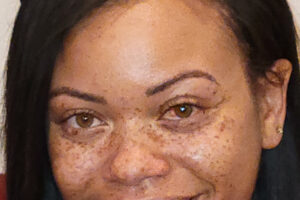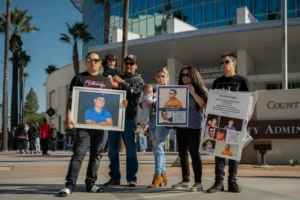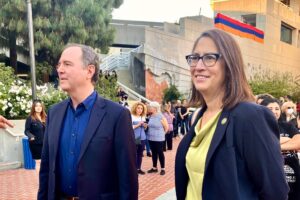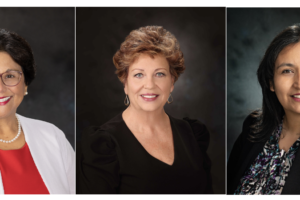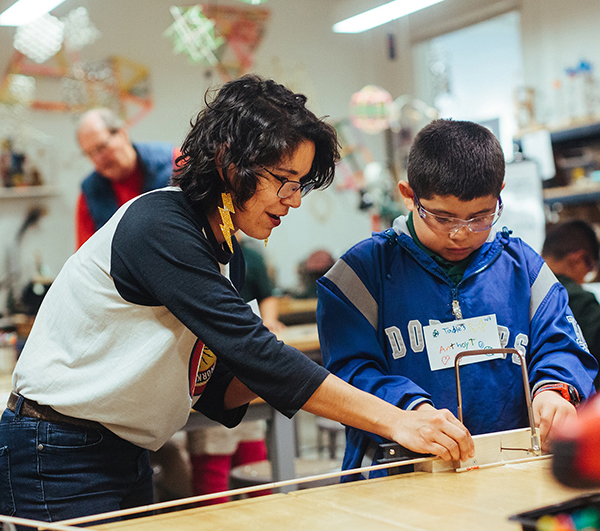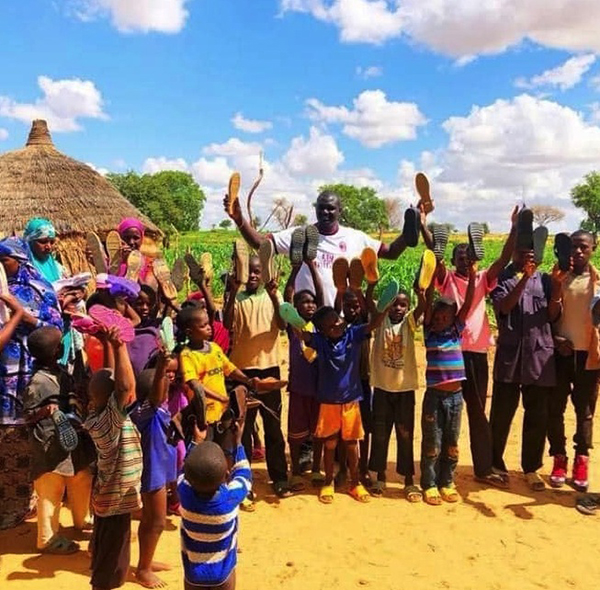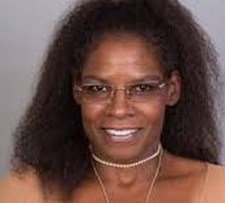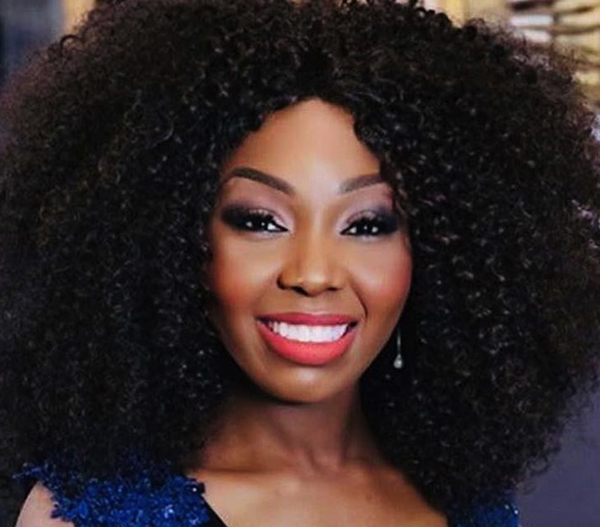MAKING A DIFFERENCE
By Darlene Donloe
Contributing Writer
Collette Williams Alleyne, the chief education officer for Inner-City Arts, knows firsthand how important it is for a young person to have the ability to be creative.
“My entire life has been centered around the arts,” said Williams Alleyne, who holds a bachelor’s degree in education with a multiple subject credential from the University of New Orleans, and a master’s in educational administration from Pepperdine University and a Clear California administrative Credential.
“My art form is dance,” she added. “I was extremely fortunate to have access to the arts from the time I was in elementary school through high school, through a private studio starting when I was two years old. By the time I was in the third grade, I did my academics concurrently with arts education. Everyone should be allowed to be creative.”
Williams Alleyne said dance, like other art forms, gives “life, breath and allows a space to express emotions that may not translate well in words.”
“Dance gives me the opportunity to connect with music, with rhythms, with beats, but also the music that comes from within,” Williams Alleyne said. “It’s about our internal rhythms, our heartbeats, our breaths. We can talk about how much breathing affects us and our ability to stabilize how we’re feeling. Dance gave me a challenge that encouraged me to push myself emotionally and physically. It was a high level of commitment to something bigger than myself. I want that same thing for our students.”
Inner-City Arts, founded in 1989 by Bob Bates and Irwin Jaeger, offers a safe, creative space in Los Angeles where more than 200,000 children have been invited to create and explore. The program provides quality arts instruction for students from underserved communities, integrated arts workshops for educators, and programming designed for the community. Inner-City Arts also has served 10,000 teachers in the Los Angeles area.
Its mission is to engage young people in the creative process in order to shape a society of creative, confident, and collaborative individuals.
During the school day, after school, and on weekends, elementary, middle and high school students go to the Inner-City Arts campus to work with professional teaching artists, receiving hands-on instruction in a range of subject areas within the performing and media arts.
The Inner-City Arts Professional Development Institute provides experiential training for educators, university students, school administrators, and others dedicated to bringing high-quality arts education to students of all ages and backgrounds.
The Visual, Media & Performing Arts Institutes offer self-select after-school and weekend classes to middle and high school students, as well as fourth and fifth graders with summer offerings for kindergarten through 12th grade students. Every class, no matter the art form, provides students with an opportunity for creative exploration, performance (sharing work), individual and group study, mentorship with professional teaching artists, and career-development support.
“The children who come here don’t have to come here for dance,” said Williams Alleyne, a married, mother of three. “My focus is supporting youth and connecting them with their purpose. If it’s an art form, it’s an art form. If it’s technology, it’s technology.
“The only limitations we have are the ones we impose on ourselves. I want them to see past their community circumstances and family circumstances. They need to know they have people to support them. They have to see past the perceived barriers.”
Williams Alleyne, 42, who has been with Inner-City Arts for three years and previously held the position of senior director of education, said the organization was founded and developed in response to budget cuts in the arts — and the need for students to have access to the arts during the school day.
“We still satisfy that need,” she said. “The beauty is we serve our community across the continuum of their lives. We have a school day program that starts in kindergarten and goes through the eighth grade. Our school day program serves classroom teachers and students. At any given time, we have between 10-12 different schools represented on campus and online.”
There is a Work of Art college and career readiness program for students in the 10th through 12th grades.
“Students get paid over the summer and the school year and attend arts classes,” said Williams Alleyne. “It’s about preparing for life after high school.” The program focuses on training, mentorship and real-world experience necessary to prepare young creatives for professional life beyond high school.
In 2020 and into 2021, Inner-City Arts had virtual fall, winter and spring sessions. About 10 schools were represented in about 30 classrooms. On average, the program serves about 1,200 students per term in the school day. There are 1,100 currently enrolled. About 1,700 students were served between April and June of 2020.
Currently, Inner-City Arts, which serves schools within a 10-mile radius, is still operating virtually, which allows for a varied student population.
About 86% of the students who attend Inner-City Arts are Black and brown, low socio-economic and English language learners.
Inner-City Arts’ unique approach to arts education measurably improves academic and personal outcomes for children and youth, including those students with limited English proficiency who are at risk of academic failure.
“The cognitive part of the brain kicks in when someone is creative,” Williams Alleyne said. “The arts can help. The arts allow for small successes. Arts activities engage all our senses. It promotes successful learning with all the other academic needs in school, including motor skills. The arts can even help when you are learning challenging skills like math.”
When COVID shut the schools, Williams Alleyne said Inner-City Arts immediately had to pivot.
“We developed art kits,” she said. “That’s when we learned the technology divide that existed between some students.”
Early on during the pandemic, Williams Alleyne said the Broad helped with supplying art kits by providing crayons, paper, pencils, paintbrushes, clay and journals for writing.
“We either delivered the kits to schools, or they picked them up,” she said. “We also supplied technology to students. We provided Apple Ipads and MacBooks.
“Of course, our teaching artists had to have all the technology because they needed to facilitate the class. We worked with students who didn’t have internet access. We provided staff development on how to use Zoom and looked at the different learning management systems.”
Williams Alleyne said what they learned in the process is that physical space is no longer their only option. They can now reach people beyond their studios and beyond their campus.
“We are continuing with a hybrid model even though there is talk about returning,” Williams Alleyne. “We have made the decision to stay virtual and continue to provide classes through distance learning through our summer program which ends in July.”
On April 12, Inner-City Arts will begin its school day program. They have two summer programs for knidergarten through sixth grade which will take place online from June 21 through July 2. From July 12-23, grades seven through 12 will take place online.
During the summer term, there will be online classes across art forms like drama/theater, filmmaking, media arts, music, photography, stand-up comedy, visual arts and creative lab.
Families interested in Inner-City Arts’ summer program are able to register now through the website.
Williams Alleyne is looking forward to a time when students can transition back into the classroom.
“This will not be a new normal,” she said. “It’s a new now. This has been the year of the greatest opportunity. We have the opportunity to shift how we look at education. It’s a chance to do education differently. This work is important. There are organizations advocating for the arts right now, who are on the ground making sure policymakers are aware of the benefit we do.”
“Making a Difference” is a weekly feature profiling organizations that are serving their communities. To propose a “Making a Difference” profile, send an email to newsroom@wavepublication.com.
Darlene Donloe is a freelance reporter for Wave Newspapers who covers South Los Angeles. She can be reached at ddonloe@gmail.com.


